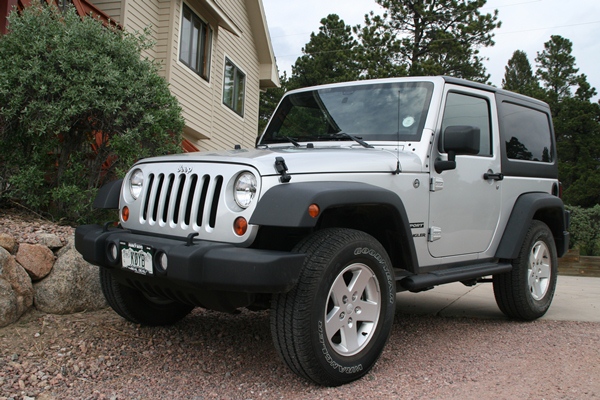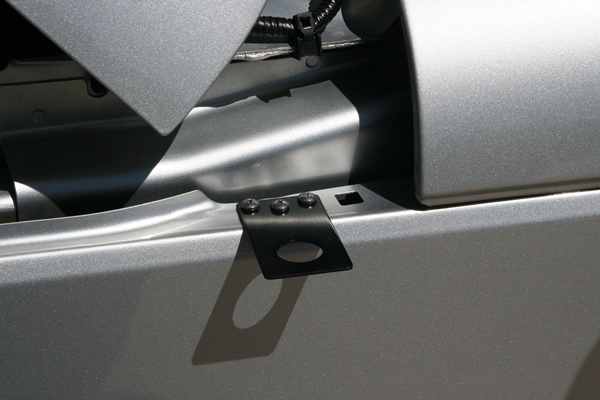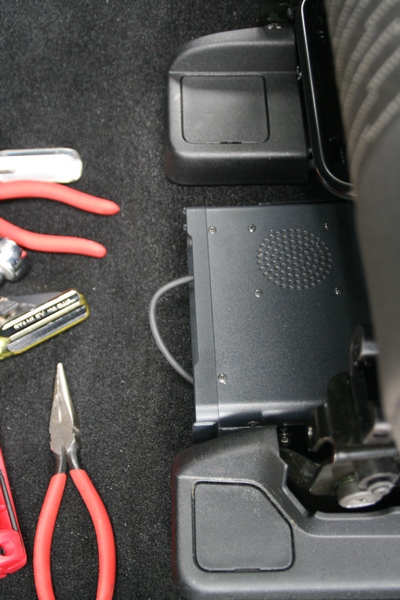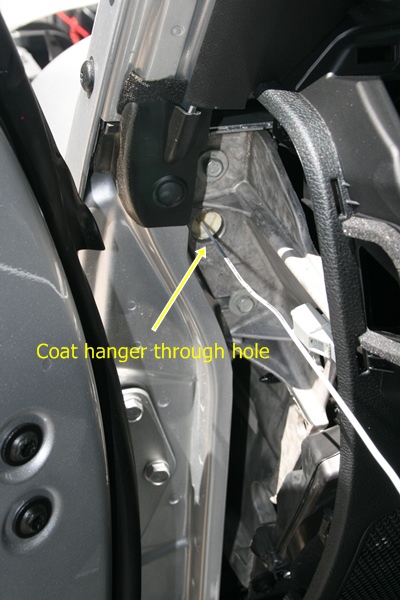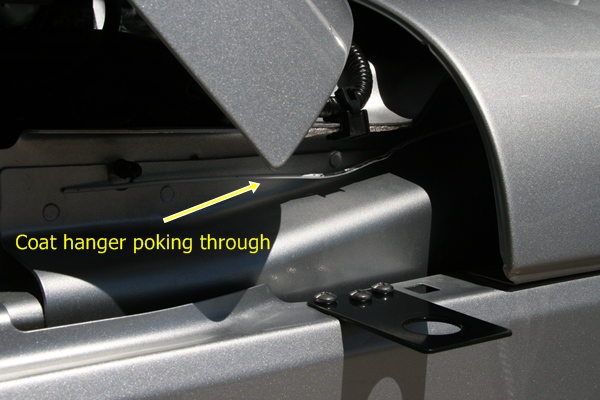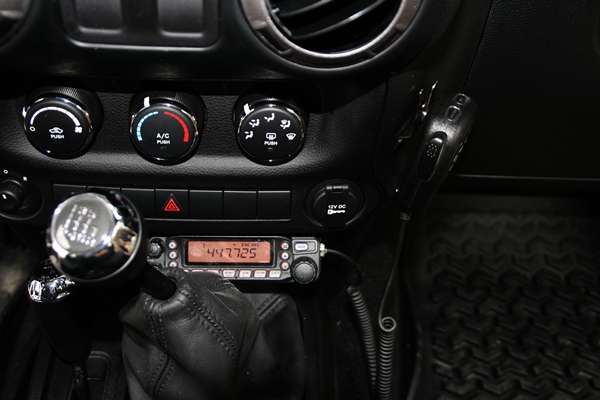Author Archive
 Results and a Few Thoughts On the June VHF Contest
Results and a Few Thoughts On the June VHF Contest
As hoped, I had a great weekend working the ARRL June VHF QSO Party (AKA the June VHF Contest). Band conditions were not as good as last year but we had some very good sporadic-e propagation on 50 MHz.
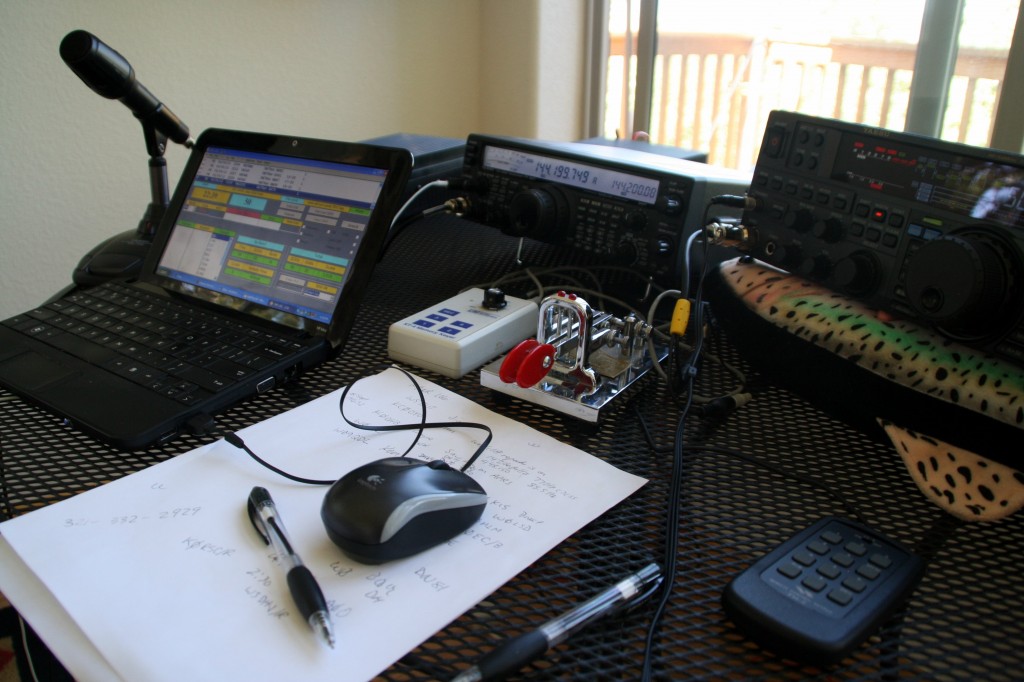
I operated from the cabin “portable style” in DM78av, near Trout Creek Pass. It was a two band effort (50 MHz, 144 MHz) but I did make a few Qs on 440 FM. Everything worked pretty well except my portable mast struggled with the high winds we experienced.
I kept my Yaesu FT-847 on 2 Meters the entire time, using its 50 Watt output to drive a 180W Mirage amplifier to a 2M9SSB yagi antenna. My FT-950 was put to work on 6 Meters, with its 100 Watt output driving a 6M5HP Yagi.
The contest started out slow with just a few local contacts on 2 Meters. About 3 hours into the contest, 6 Meters started to percolate and I heard east coast and midwest stations popping up. Soon, the sporadic-e was in high gear and I was working stations at a decent clip. Later in the day, the band swung around and I worked quite a few stations in pretty much every part of the USA. Sunday started out in the morning with a few contacts to the south, including XE2X in grid EL06. Later the band flipped over to the east coast, then hovered over the midwest. Later in the day, the VE stations from Canada were pounding in and it seemed they were having a blast working many different states.
Band QSOs X pt = QSO pts. X Grids = Points --------------------------------------------------------------- 50 398 1 398 126 50148 144 38 1 38 13 494 432 3 2 6 3 18 --------------------------------------------------------------- TOTALS 439 442 142 62764
Note the CW keyer and paddles in the picture. I am not a great CW op but I end up making a few CW contacts “when the going gets tough” during VHF contests. Not shown in the photo is the Heil Pro Set headset with HC-4 microphone element and optional PTT foot switch. I have really come to appreciate how effective and efficient this headset is for contesting. I’ll also give a shout-out for the VHFLOG contest software by W3KM. I’ve tried a number of logging programs and really like this one for VHF contests.
73, Bob K0NR
 Gear Up for the June VHF Contest!
Gear Up for the June VHF Contest!
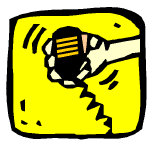 This weekend is the ARRL June QSO Party (also known as The June VHF Contest). It is a great opportunity to get on the air and try out the VHF bands. In particular, 6 Meters usually has some fun sporadic-e propagation during the contest. It is a blast when that band comes alive with signals from across North America.
This weekend is the ARRL June QSO Party (also known as The June VHF Contest). It is a great opportunity to get on the air and try out the VHF bands. In particular, 6 Meters usually has some fun sporadic-e propagation during the contest. It is a blast when that band comes alive with signals from across North America.
For complete info see: http://www.arrl.org/june-vhf-qso-party
I am going to operate from our cabin near Trout Creek Pass (DM78), focusing on 6 Meters and 2 Meters.
Check out this article that I wrote on how to work a VHF contest:
http://www.k0nr.com/rwitte/vhf_contest.html
Most of the activity will be on SSB, calling frequencies are: 50.125 MHz, 144.200 MHz, 432.100 MHz, all USB
On FM, try these frequencies: 146.55 MHz, 223.5 MHz, 446.0 MHz
Get up off the couch and have some radio fun this weekend!
73, Bob K0NR
 This Spewed Out of the Internet #22
This Spewed Out of the Internet #22
 The internet keeps spewing forth a river of bits, some of it actually useful information.
The internet keeps spewing forth a river of bits, some of it actually useful information.
Reliable sources tell me that the date for the 2013 Hamcon Colorado has been set: June 28-30 in Estes Park, Colorado. This event is the best hamfest in Colorado and happens every 4 years. (It is the ARRL Rocky Mt Division Convention which rotates between Colorado, Utah, Wyoming and New Mexico.) The date is a little later in the year than previous Hamcon Colorado’s which I think will be even better for attracting out of state visitors. The 2012 division convention will be held July 27-29 in Bryce, Utah.
The ARRL June VHF QSO Party is coming up on June 9-11. This is my favorite ham radio event of the year, since it stimulates VHF activity and (usually) has some good propagation on 50 MHz. Get on the air and have some fun!
For the EEs in the crowd, my friend Ken Wyatt (WA6TTY) is now writing an EMC Blog for Test and Measurement World. Ken is a industry expert on Electromagnetic Compatibility and a pretty darn good author as well.
This article in The Atlantic says that people are using their WiFi SSID to share their political position (“I Heart Obama”). This is sad, really sad.
Neil Armstrong is one my personal heroes, not just because he was the first man on the moon (I mean, if you believe that really happened). He has had every opportunity to promote himself as a celebrity but instead he keeps a low profile. I like that. I came across the video of an excellent (and rare) interview with him on an Australian web site.
There is a new ham radio podcast on the air: Ham Radio Podcast. Check it out and give it a try. And, in case you haven’t found this one, check out the Practical Amateur Radio Podcast by my friend Jerry Taylor (KD0BIK).
The ARRL has launched the digital version of QST magazine. It seems to work but it’s not a very satisfying experience on my little netbook. Probably better with a large monitor. See comments from AA6E and KE9V.
- 73, Bob K0NR
 A New Digital VHF/UHF Radio from Yaesu
A New Digital VHF/UHF Radio from Yaesu
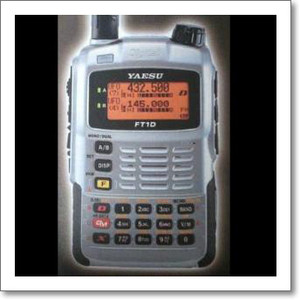 A while back, Yaesu published a white paper/brochure on VHF/UHF digital technology that slammed D-STAR for using GMSK modulation and stated that C4FM (4-Level FSK) is the way to go. See my previous posting on that topic. The paper also talked about DMR and APCO 25 as standards that use C4FM.
A while back, Yaesu published a white paper/brochure on VHF/UHF digital technology that slammed D-STAR for using GMSK modulation and stated that C4FM (4-Level FSK) is the way to go. See my previous posting on that topic. The paper also talked about DMR and APCO 25 as standards that use C4FM.At this point in time Vertex Standard believes the C4FM (4-level FSK) FDMA or TDMA are the most suitable selections for Amateur radio applications. In early 2012, we will release a C4FM (4-level FSK) FDMA Handy-Talky and a Mobile transceiver into the Amateur radio market. After our initial introduction, we plan to introduce a C4FM (4-level FSK) TDMA (2 slots) or TDMA Handy and Mobile transceiver into the Amateur market.
 My Comments on FCC Proceeding 12-91
My Comments on FCC Proceeding 12-91
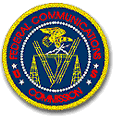 At the direction of Congress, the FCC opened up Proceeding 12-91: COMMISSION SEEKS COMMENT ON EMERGENCY COMMUNICATIONS BY AMATEUR RADIO AND IMPEDIMENTS TO AMATEUR RADIO COMMUNICATIONS.
At the direction of Congress, the FCC opened up Proceeding 12-91: COMMISSION SEEKS COMMENT ON EMERGENCY COMMUNICATIONS BY AMATEUR RADIO AND IMPEDIMENTS TO AMATEUR RADIO COMMUNICATIONS.
I decided to file my comments with the Commission, which can be read in full here. I’ll also provide the short version here:
1. The contributions of amateur radio operators during disasters and emergencies is substantial and well documented.
2. The key attributes that make the Amateur Radio Service so valuable in an emergency or disaster situation include the large number of trained operators available, the tendency for many amateur radio operators to prepare their stations for emergency operating conditions, the high degree of flexibility due to the wide range of spectrum and emission types available, and the ability of amateur radio operators to adapt to adverse operating conditions,
3. Restrictions from homeowners associations banning all external antennas is a serious and pervasive impediment to amateur radio emergency communications.
4. Limitations on emission type in Part 97 should be relaxed or eliminated.
5. There is the potential to improve the use of the Amateur Radio Service within the overall planning and organization of the federal government.
There are many different issues that could be highlighted but I decided to focus on these…with an emphasis on restrictive covenants.
What do you think? File your comments with the FCC here.
73, Bob K0NR
 Jeep Wrangler Radio Install
Jeep Wrangler Radio Install
We recently sold the old white Jeep and bought a 2012 Wrangler (JK). After quite a bit of researching and experimenting with antenna mounting options, I finally got the ham gear installed in it. My objective is to get 2 Meter and 70 cm FM capability into the vehicle, using the Yaesu FT-7800 that I pulled out of the old Jeep. The big question was what to do about the antenna. The fiberglass hardtop does not make for a good antenna ground plane. Even if it did, during the summer months, we’ll sometimes take the top off to enjoy the open air ride.
Initially, I planned to use the Arizona Rocky Road NMO antenna mount with a Diamond dualband antenna that is a 1/2 wave on 2 Meters. The 1/2 wave does not need a ground plane, so the performance is usually better with irregular mounting structures. However, I found that this antenna combination did not clear my garage door. I don’t like to have to remove or tilt a vehicle antenna to get in/out of the garage — my experience is that it usually just gets left in the “down” position. I tried a shorter 19-inch dualband whip antenna but its performance was dismal due to these factors: lack of a ground plane, being blocked by the vehicle body and poor grounding on the spare tire carrier. By the way, the grounding issue on the tire carrier (and many other technical topics) are discussed in these online forums: WranglerForum, JK-Forum. I think the Arizona Rocky Road mount would have been my preferred way to go (with the longer Diamond antenna), except for the garage issue. One problem I ran into with that mount is that the standard NMO mounts I have (the basic mounts with the cable attached) did not handle the thick steel of the mount. I had to purchase special NMO mounts made to handle thicker metal (see TheAntennaFarm.com).
I abandoned the Arizona Rocky Road approach and decided to use a simple NMO mounting bracket (Laird SBTB3400) on the driver’s side hood. Like all Wrangler antenna installations, this is a compromise. It is lower on the vehicle than I would like but it does not block the driver’s view. Other people have used a variety of “trunk lip” mounts to accomplish the same thing but be sure to check out the driver’s view before installing. Installing the mount was easy, just three holes drilled and three sheet metal screws.
The next question was where to install the radio. I took advantage of the FT-7800′s detachable control head, mounting it on the dash, while placing the radio under the driver’s seat. I attached the radio’s mounting bracket to the floor of the Jeep with two heavy sheet metal screws. This keeps the radio up off the floor in case water gets into the Jeep. However, it only provides about 1 inch of water clearance, so you hard core Jeepers that are used to flooding the interior of the vehicle during stream crossings may find this inadequate.
I have to admit that I ran into a significant problem at this point. There was not enough clearance around the radio mounting bracket to get all four of the screws installed that attach the radio to the bracket. In the end, I unbolted the drivers seat and tilted it back, which gave me room to insert and tighten the screws. More careful positioning of the radio mount might have saved me from this hassle.
It is always a bit of an adventure to find a way to route the power cable from the engine compartment to the vehicle interior. Fortunately, Jeep has made this very easy, but it is not obvious just by looking around. Fortunately, the folks on the various online forums have scoped this out and provided good advice.
I popped off the small side panel of the dash on the driver’s side, to expose a hole filled with foam (see photos).
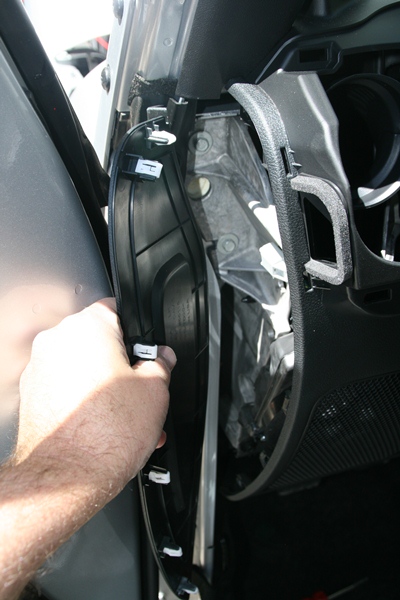
The plastic panel on the driver’s side of the dash pops open to reveal a routing hole filled with foam
A stiff wire or coat hanger can be poked into this hole and the foam easily gives way.
And the coat hanger comes out the other side, right next to the antenna mount.
I routed the power cable and the antenna cable through this hole. I connected the power cable directly to the battery, which is the recommended approach to avoid alternator whine and other problems. I understand there is a similar routing hole on the passenger side but I did not verify that.
The last thing to figure out was where to mount the control head. Although it is a tight fit, I mounted it in front of the gear shift. (I have the 6-speed manual transmission…the automatic transmission gives you more room here.) The control head is very light, so I used stick-on Velcro (about an inch wide and four inches long) to attach it to the dash. This seems to work OK but I will admit that the attachment is just a bit wobbly…fine for turning volume and VFO knobs but the not so good for pushing buttons. Also, I’ll have to see if it shakes lose on bumpy 4WD trails. If so, I’ll fabricate a small bracket to provide better attachment.
In the process of exploring, I did take the dash apart to figure out what my options were. In retrospect, it was probably unnecessary due to where I eventually mounted the radio and control head. I found this youtube video to be very helpful in dismantling the dash.
Initial checkout shows that the radio installation is working fine. I was pleasantly surprised that the antenna SWR was quite good (<1.5) over the bands of interest. I will use the short 19-inch whip most of the time but I can swap out other NMO mount antennas (including the Diamond dualband antenna I mentioned earlier.)
I appreciate all of the info out on the interwebz concerning JK radio installs and I am passing along what I learned to assist other folks with their Jeep installations.
- 73, Bob K0NR
Update 20 June 2012:
It turns out that the Velcro (hook-and-loop fastener) approach did not work. The Velcro attachment itself was pretty reliable but the stick-on adhesive failed after a few weeks. I used a couple of L-shaped brackets to attach the control head to the dash and it seems to be working fine. I have used Velcro successfully in past installations but in situations where the control head was positioned on top of the center console so the main purpose of the Velcro was to prevent horizontal movement. In other words, the Velcro did not have to support the entire weight of the control head, just keep it from moving around.
 New Categories for ARRL VHF Contests
New Categories for ARRL VHF Contests
The April 25th issue of Contest Update from the ARRL had this item:
The ARRL Programs and Services Committee has approved a rule change for ARRL VHF+ contests effective beginning in 2013 (not this year) to create a Single-Op FM-only category (100 W max, 50/144/222/440 MHz) and a three-band Single-Op category (100 W PEP on 50 and 144 MHz, 50 W PEP on 432 MHz). These changes will apply to the January, June, and September contests – again, beginning with the 2013 January VHF Sweepstakes.
I am always looking for ways to get more people involved in VHF contests and these two new categories may help. The basic idea is to create categories for simpler stations to participate in the contests without having to be in the same category as The Big Guns.
73, Bob K0NR
